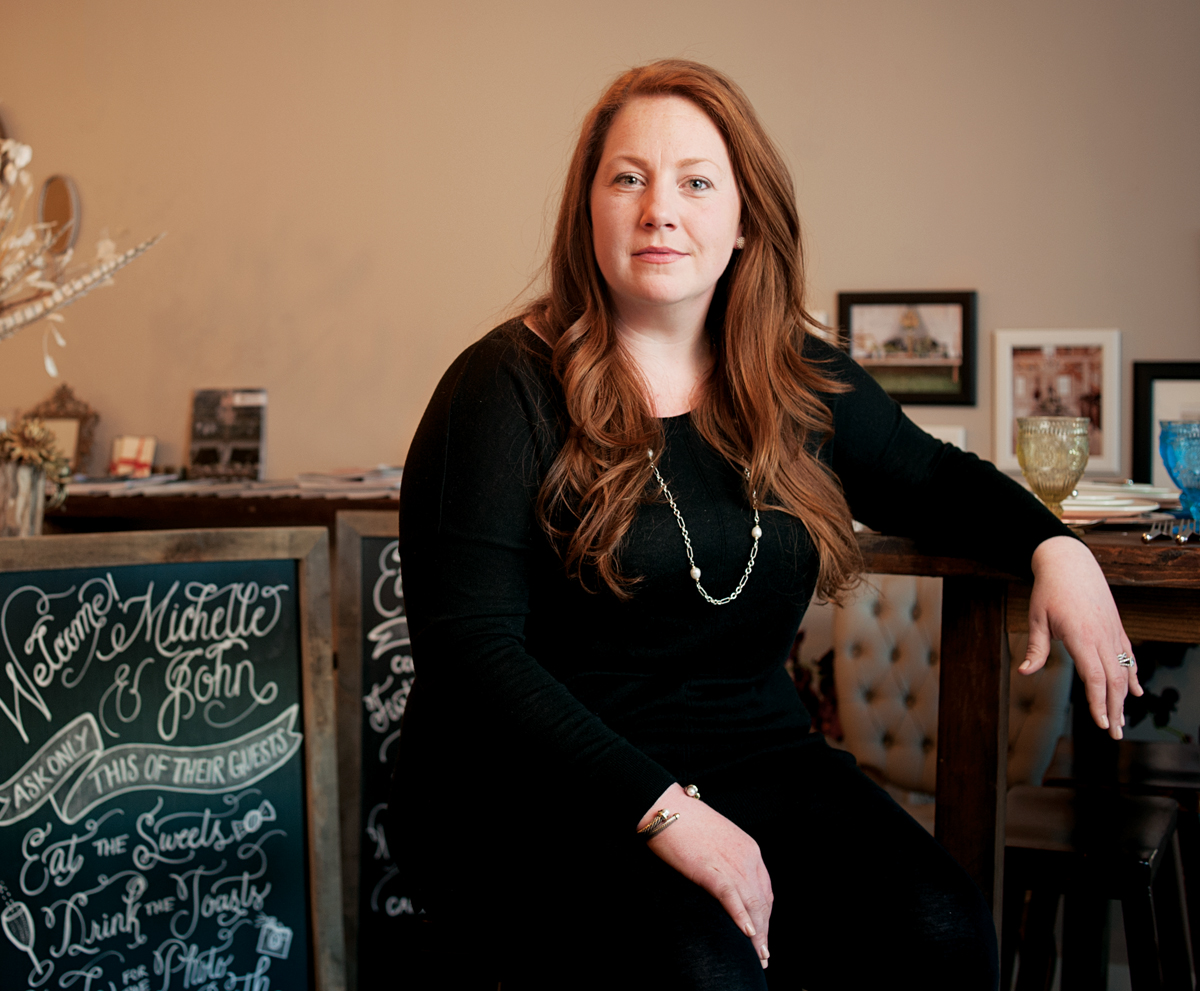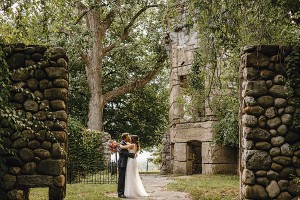The Doodle Doyenne

Photograph by Jared Leeds
When Cara Linehan Esch was in the first grade, she made a greeting card for her classmates to announce that she was changing her name to Rose. “I should have known then that I’d go into personalized paper goods,” says the 32-year-old calligrapher. The new moniker, of course, didn’t stick, but Esch’s love for lettering endured. It was after college, while studying calligraphy technique, that she decided to take her talents from hobby to career. Esch now owns and operates Dear Rose Studio—she got to use the name after all—out of her Scituate home, where she crafts invitations, menus, and more. Here, she talks about hand-printing the finer points of a couple’s big day.
How do you create a script?
It’s constantly a work in progress. I’ve created scripts from things that inspire me, whether it’s an old piece of art or something in a book. I might see an “S” that I love and think, Someday I’ll make a script that has a place for that “S.” Some I’ve been piecing together for years. I use a variety of instruments, but for most projects I use a pointed or broad-tip dip pen that has a removable nib. I have hundreds of nibs that I switch in and out depending on the script choice, paper type, and letter. I use a lot of paintbrushes for thick or bold lines that you would want for larger letters on a sign or banner, and I use either acrylic ink or watercolors. I’ve learned a few tricks along the way—like Windex removes ink from almost everything, a builder’s laser level is key when I can’t draw pencil guidelines, and a kitchen sponge is a great, lint-free way to clean a nib between ink dips.
What are some of the advantages of hand-lettering?
If you tell a computer to use the same font in the same size and color twice, it’s going to look exactly the same. If I have two couples order the same font in the same size and color twice, it’s going to look completely different because in the course of working with them, I get a feel for their wedding style or personality. I’m going to infuse the writing with their individual personality and style.
Why should someone hire a calligrapher in this era of technology?
People keep things that mean a lot to them. That handwritten artifact is so special, and there’s a story there, a mood. It’s those details that make a wedding the special occasion it should be. It just gives your celebration so much more character.
Let’s talk paper. What’s your preferred canvas?
There’s amazing paper and then there’s amazing paper to write on, and they’re not the same. Letterpress is a big trend and I love it, but I request a different type of paper for the envelopes, because really soft paper is so fibrous that the ink will feather. But for different papers I can usually tweak the ink to be thicker or thinner—I do a lot of blending to find the right consistency.
What’s hot in calligraphy?
This is the first season that I’ve worked on paper less than anything else. Chalk is nuts right now. It’s a mix of vintage and rustic and ornate—I’m constantly doing seating charts, menus, and programs on chalkboards. I’ve also done a lot of those things on wood. I just did a wedding where there were dahlias in the bouquet, so I made a large program on a piece of stained wood, and then drew a large dahlia in the corner with vines. The bride and groom are going to keep it forever, and I love that.
What are some other ways couples can display your work?
People have taken my envelopes and laminated them to make luggage tags. I had a bride and groom who had me make a rubber stamp with their return address from an envelope. I’ve also had couples who have framed menus. For one wedding, instead of a traditional guest book, I made a life preserver with the bride and groom’s initials and the wedding date, and everyone signed and dated it.
How far in advance should couples plan their invitations, save-the-dates, and day-of details like place cards and menus?
Honestly, it’s never too soon. As soon as they have a basic plan—like when, where, whether it’s formal or informal, the mood, and the size, even if it’s vague. I can help fill in the blanks. I love that opportunity, because the details of a wedding are what set it apart.
What typically inspires your design process?
I want to know what the bridesmaids are wearing, about the venue—I want to make sure it’s a whole story when it’s put together. I use a questionnaire for details. Everything else happens in conversation. I also always ask people about postage. It’s overlooked a lot. Right now there are muscle-car stamps. What if you went to the post office and all they had was the Plymouth Hemi ’Cuda?
What are some outside-the-box projects you’ve worked on?
I did a menu on a large mirror, which had a really cool effect in the venue. Right now I’m working on a huge banner. It’s paper, but it’s going to look rippled and be pinned to a floral arbor. And I’m dying to write on cake fondant! You could pair your cake baker and calligrapher up to create a cake topper of your new married names, or drape the cake tiers with fondant swags that have your vows written on them.
Any tips for couples on a budget?
That’s where technology is a huge benefit. I can do 200 handwritten menus, but I can also do one for a fraction of the cost and have it reproduced by a printer. There’s always a way to make it work. I can create a motif or a monogram or some sort of logo to brand your wedding, and then you can use it on anything. I’ve had people make stamps out of it, thank-you notes, aisle runners. You can get a lot of bang for your buck that way.
What’s the best thing about what you do?
I’m a part of the happiest time of people’s lives. And I’m drawing all day. I do a lot of doodling and that’s work—that’s amazing.
Dear Rose Studio, 617-823-4250, dearrosestudio.com.
TIPS
Match your wedding look with handwritten stationery styles, as recommended by Esch.
Traditional
Black ink, white paper, and a classic copperplate alphabet are as timeless and elegant as a tux and strapless ball gown.
Modern
Go for the unexpected with architectural alphabet or foundational script in small caps.
Rustic
Pair a traditional script (copperplate, Bickham, or engravers) with stylized details like white ink on brown kraft paper, envelopes addressed at an angle, or a seating chart painted on part of a salvaged barn door.
Vintage
Ask for an imperfect version of a traditional script: Dots of splattered ink and a little less uniformity from letter to letter are romantic and part of the beauty of hand-lettering.
Getting married? Start and end your wedding planning journey with Boston Weddings' guide to the best wedding vendors in the city.


